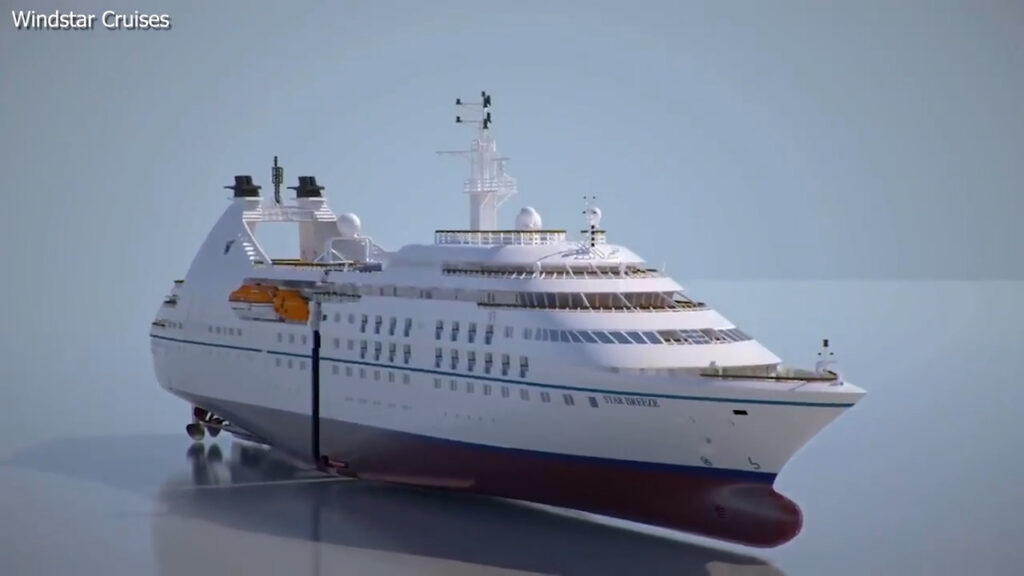
A whopping 30 million people will have taken cruises in 2024, and some ships being built to keep up with this demand cost as much as $2 billion.
Ever wonder how cruise lines keep up with the insatiable demand for bigger and better ships?
It turns out they have a trick up their sleeve that’s almost as impressive as building a new vessel from scratch.
Let’s dive into the fascinating world of cruise ship “jumboization.”
GET SECURITY ALERTS, EXPERT TIPS – SIGN UP FOR KURT’S NEWSLETTER – THE CYBERGUY REPORT HERE
Cruise vacations have exploded in popularity over the past few decades. In 1990, about 3.7 million people took a cruise, but fast-forward to 2024, and we’re looking at a whopping 30 million cruisegoers. That’s a lot of buffet lines.
To keep up with this soaring demand, cruise lines have been building massive ships like Royal Caribbean’s Icon of the Seas. This floating city can carry nearly 10,000 people and boasts features like a waterpark, seven pools and 20 decks of entertainment. However, these mega-ships come with a hefty $2 billion price tag and take years to build.
That’s where “jumboization,” a surgical procedure for ships almost as wild as it sounds, comes in. For about $80 million and just a couple of months out of service, cruise lines can literally slice an existing ship in half, add a new middle section, and weld it all back together. The result is a bigger ship with more cabins, more amenities, and more profit potential — all without the hassle of building an entirely new vessel or training an entirely new crew.
HOW TO PROTECT YOUR ONLINE PRIVACY AND SECURITY ON YOUR NEXT CRUISE VACATION
The process begins with engineers meticulously planning every detail of the new section to ensure that all systems will line up perfectly. The new section is constructed separately, often complete with interior fittings. Once ready, the existing ship is positioned on special lifting jacks known as “skid shoes.” Workers then cut the ship clean in half using lasers for precision.
After that, the two halves are separated to make room for the new section, which is slid into place. Skilled welders join the sections together with millimeter precision, ensuring that everything fits perfectly. Afterward, thousands of cables, pipes, and ducts are reconnected to restore functionality. Finally, every system undergoes thorough testing before the ship returns to service.
HOW TO REMOVE YOUR PRIVATE DATA FROM THE INTERNET
HOW TO STAY CONNECTED NO MATTER WHERE YOU TRAVEL IN THE WORLD
This process isn’t just a cool engineering feat. It’s also a financial goldmine for cruise operators. The extra cabins added during jumboization can pay for the entire operation within just a few years. Additionally, it offers an opportunity to upgrade other features, such as pools and engines, or even add entirely new attractions.
GET FOX BUSINESS ON THE GO BY CLICKING HERE
THE HIDDEN COSTS OF FREE APPS: YOUR PERSONAL INFORMATION
As demand for cruising continues to grow, we are likely to see more and more ships getting the jumboization treatment. This trend is a testament to human ingenuity. We can take something as massive and complex as a cruise ship and essentially “stretch” it like a piece of taffy. These “extended” vessels prove that sometimes the most impressive innovations aren’t about building something new but rather reimagining what we already have. So, next time you’re on a cruise, take a moment to appreciate the engineering innovation beneath your feet. It might be hiding a secret middle section.
What are your thoughts on the environmental impact of jumboization in the cruise industry, and do you think the benefits of expanding existing ships outweigh the potential ecological costs? Let us know by writing us at Cyberguy.com/Contact
For more of my tech tips and security alerts, subscribe to my free CyberGuy Report Newsletter by heading to Cyberguy.com/Newsletter
Ask Kurt a question or let us know what stories you’d like us to cover
Follow Kurt on his social channels
Answers to the most asked CyberGuy questions:
New from Kurt:
Copyright 2024 CyberGuy.com. All rights reserved.